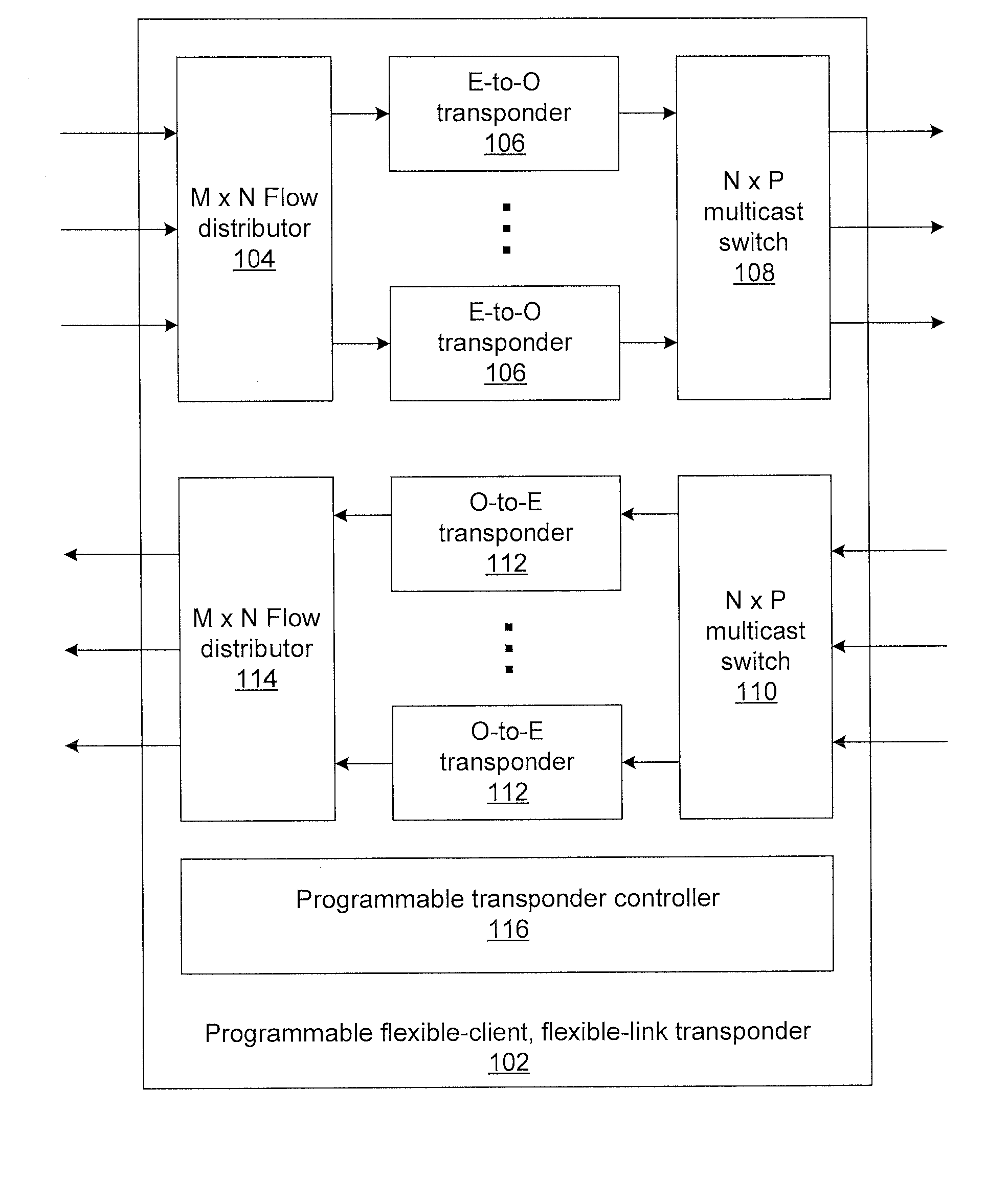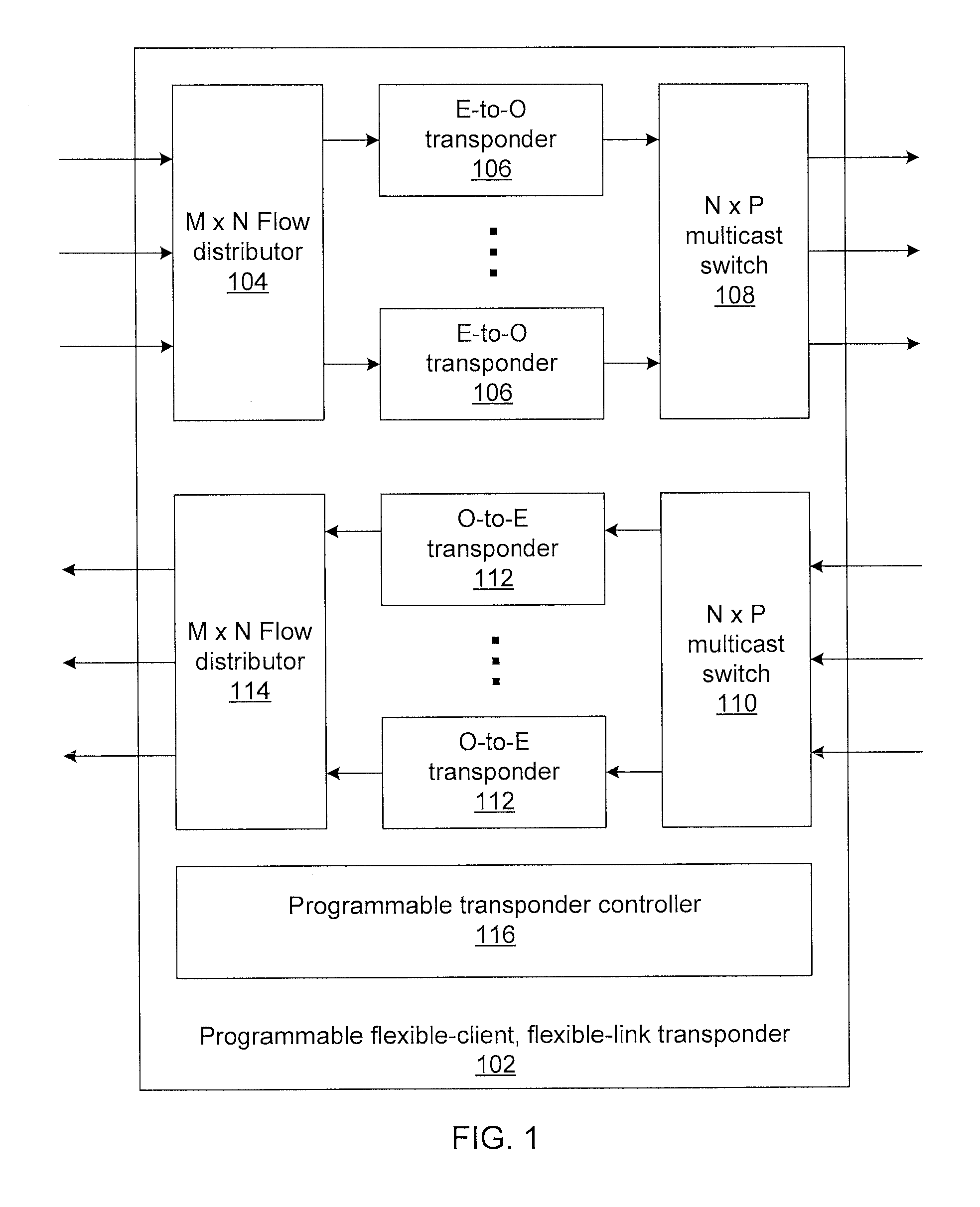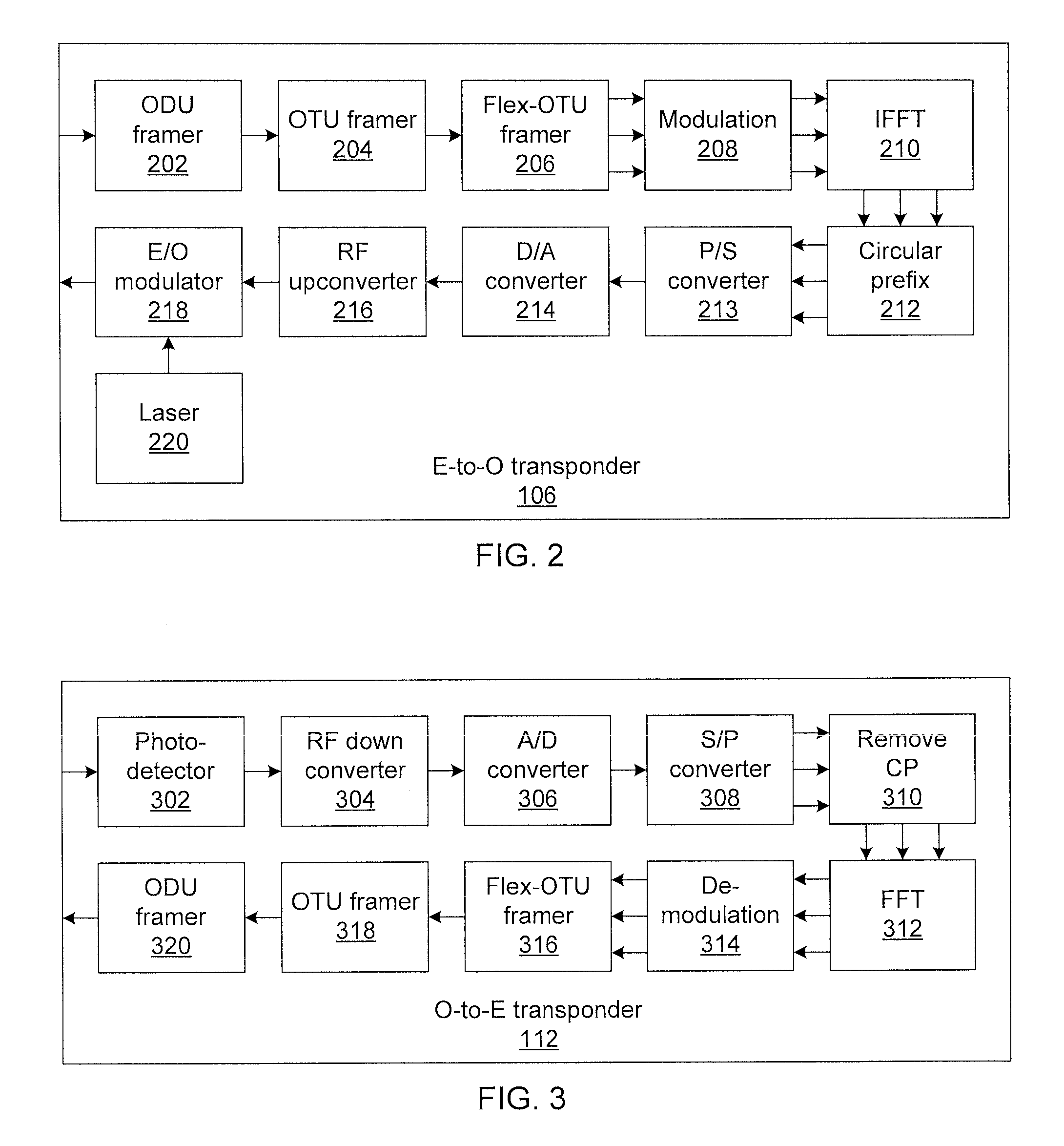Flexible-client, flexible-line interface transponder
a client and line interface technology, applied in the direction of multiplex communication, time-division multiplex, electrical devices, etc., can solve the problems of increasing the overall complexity and cost of network operation, inability to achieve the rate adaptation flexibility at line interfaces, and limited existing technologies
- Summary
- Abstract
- Description
- Claims
- Application Information
AI Technical Summary
Benefits of technology
Problems solved by technology
Method used
Image
Examples
Embodiment Construction
[0018]Embodiments of the present invention provide a flexible-client, flexible-line transponder in which flexible client and line interfaces are realized using frame compression, optical frequency division multiplexing (OFDM) modulation, and link aggregation groups (LAGs). Frame compression compresses optical transport network (OTN) frames by eliminating unused tributary slots during OTN framing. The compressed frame is then de-serialized and distributed among a number of physical lanes proportional to the actual data rate carried over the OTN channel. The bit streams over the physical lanes are modulated on independent subcarriers using electrical OFDM. Finally, the subcarriers are transmitted using a single wavelength division multiplexing channel (WDM). Thus, filtering out unused timeslots during framing and establishing electrical subcarriers proportional to the effective client rate enables flexible client interfaces. At the line interface, the line rate of a WDM channel can be...
PUM
 Login to View More
Login to View More Abstract
Description
Claims
Application Information
 Login to View More
Login to View More - R&D
- Intellectual Property
- Life Sciences
- Materials
- Tech Scout
- Unparalleled Data Quality
- Higher Quality Content
- 60% Fewer Hallucinations
Browse by: Latest US Patents, China's latest patents, Technical Efficacy Thesaurus, Application Domain, Technology Topic, Popular Technical Reports.
© 2025 PatSnap. All rights reserved.Legal|Privacy policy|Modern Slavery Act Transparency Statement|Sitemap|About US| Contact US: help@patsnap.com



